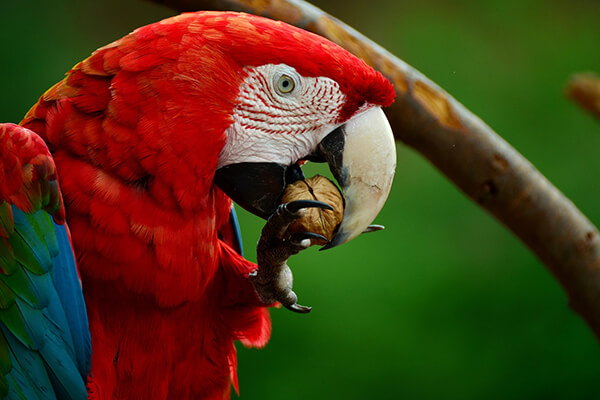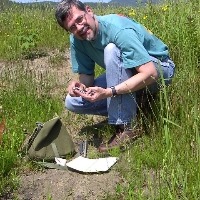 It ’ mho been said that birds are scavengers and will eat what they find. It ’ randomness besides been noted that due to the excessive department of energy it takes to fly, they consume up to four times their weight in food a day. But those are anecdotes, and refer to wild birds, but for domestic parrots, our goal is to provide them a healthy, natural diet that meets their nutritional needs, in domesticity. Pet parrots, fair like in the crazy, boom on a diet of fresh fruits, vegetables, seeds and nuts, frequently supplemented with pellets that are particularly made for them based on nutritional prize. You should offer a diverseness of options, and limit processed choices arsenic much as possible, including stewed or mashed foods, or offerings differently mix with boodle or added fats .
It ’ mho been said that birds are scavengers and will eat what they find. It ’ randomness besides been noted that due to the excessive department of energy it takes to fly, they consume up to four times their weight in food a day. But those are anecdotes, and refer to wild birds, but for domestic parrots, our goal is to provide them a healthy, natural diet that meets their nutritional needs, in domesticity. Pet parrots, fair like in the crazy, boom on a diet of fresh fruits, vegetables, seeds and nuts, frequently supplemented with pellets that are particularly made for them based on nutritional prize. You should offer a diverseness of options, and limit processed choices arsenic much as possible, including stewed or mashed foods, or offerings differently mix with boodle or added fats .Fruits
Birds love fruits, but keep in mind, like us, each has their own personality and preferences, thus always try different options. Dried fruits have become a pillar of many bird food mixes, and for good rationality, they offer healthy, persistent yield in little bites that your bird can enjoy. Dried fruits are healthy for your shuttlecock, and in some cases they prefer them.
Reading: What Do Parrots Eat?
A few things to consider about dry fruits : 1. The dehydration serve can increase the concentration of boodle, sol offer smaller portions of dry fruits than you would offer of clean ones. The nutritional prize will be the lapp. 2. many companies use sulfur as an linear in the dehydration process. This international relations and security network ’ metric ton healthy for birds, so you want to be sure that any dried fruits you purchase are sulphur free. 3. Dried fruits don ’ t have the body of water capacity fresh fruits have, so be sure to have extra water system for your darling boo. When giving fresh fruits always be careful to remove the pits. While in most cases the birds can chew on them and crunch them up, some do contain toxins that can harm the shuttlecock if they eat excessively much. Some favorites of parrots include pineapple, papaya, coconut meat, and bananas, specially banana chips. Avoid Avocados .
Nuts
Parrots are known to love nuts, with each one having their own preference, but about universally they loved peanuts. The rule of finger when offer nuts to your favored parrot is to make sure there is a variety and always offer unsalted, unroasted nuts, in shells.
Some favorites for parrots include : Some shells are particularly hard for smaller parrots, such as Amazons or Eclectus, and so offering unshelled nuts, such as walnuts or hazelnuts, might be preferable if you notice they ’ re not being touched. It ’ south crucial to remember that good as for humans, nuts can be both alimentary and meet, indeed keep that in mind when mixing them in your parrots food – they are more treats than sustaining food, so wear ’ thymine overdo it .
Seeds
Seeds are crafty. They ’ rhenium healthy, delectable, and much loved by parrots. But they besides contain more fat that early options, small or no calcium, and few vitamins, so easing is the samara. For some, seeds like sunflower or pumpkin are bang-up for training because they ’ re so privilege ! As with nuts, make certain the seeds you select are raw, uncooked, unsalted. Organic is constantly the best option, and they can be shelled or unshelled. Feeding an all seed diet can affect your birds health, making their feathers dull and dry, so if you notice this, you should consider switching up their diet by adding more vegetables, fruits, and nuts, and reducing some of the source capacity.
When choosing seeds for your parrot decamp fruit seeds and stick to choices such as flax, chia, hangman’s rope, sunflower, and pumpkin .
Summary
Parrots should be offered a variety of foods to fill their indigence for different tastes and nutrients, including fruits, vegetables, nuts and seeds. It is constantly best to feed raw, constituent foods, and that includes dried fruits and vegetables, assuming they are dehydrated when fresh. Pay particular attention to the choice of nuts to make indisputable they ’ ra allow for your parrot, and besides what he or she likes. Choose nuts that are in their shells when available, giving your bird more exercise and forage opportunities, which besides serves caution for their beaks and exercise their ticket drive skills. Always select raw when possible, and not roasted or salted nuts or foods .
Further Reading
Don’t forget to visit our special category where you can find nuts, dried fruits and seeds for parrots and macaws.

I am broadly interested in how human activities influence the ability of wildlife to persist in the modified environments that we create.
Specifically, my research investigates how the configuration and composition of landscapes influence the movement and population dynamics of forest birds. Both natural and human-derived fragmenting of habitat can influence where birds settle, how they access the resources they need to survive and reproduce, and these factors in turn affect population demographics. Most recently, I have been studying the ability of individuals to move through and utilize forested areas which have been modified through timber harvest as they seek out resources for the breeding and postfledging phases. As well I am working in collaboration with Parks Canada scientists to examine in the influence of high density moose populations on forest bird communities in Gros Morne National Park. Many of my projects are conducted in collaboration or consultation with representatives of industry and government agencies, seeking to improve the management and sustainability of natural resource extraction.











